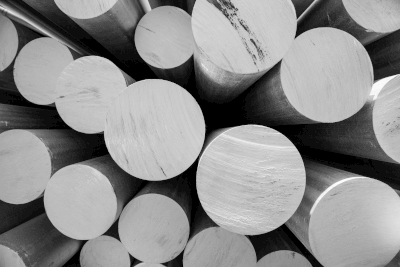What Is Aluminum?

Aluminum, with the atomic number 13 and symbol Al, is a lightweight metal (specific gravity of 2.7). It is extensively used in transportation (vehicles, aircraft, bicycles), sports equipment, packaging, and building materials due to its excellent thermal and electrical conductivity. Its malleability makes it ideal for various fabrication processes, and its corrosion-resistant oxide coating ensures durability.
Uses of Aluminum
Aluminum is pivotal in numerous applications:
- Transportation Equipment: Engine blocks, airplane components, train carriages, and window frames.
- Packaging Materials: Foil, cans, blister packs.
- Building Materials: Window sashes, roofing, handrails.
- Electrical Products: Cables, enclosures, heat sinks, and capacitors.
- Tableware and Cookware: Pots, pans, and utensils.
- Medical Equipment: Artificial joints, implants, and surgical tools.
Properties of Aluminum
Lightweight
Aluminum’s low density is attributed to its large atomic spacing and weak atomic attraction, making it significantly lighter than iron and copper.
- Aluminum: ~2.71 g/cm3
- Iron: ~7.87 g/cm3
- Copper: ~8.96 g/cm3
Corrosion Resistance
The metal forms a protective oxide film naturally, shielding it from corrosion. Yet, certain environments necessitate additional surface treatments.
Conductivity
Aluminum’s exceptional electrical and thermal conductivities are due to its atomic structure and metallic bonds, facilitating efficient electron and heat transfer.
Workability and Plasticity
Its malleability and strength, even when soft, allow for easy shaping through hot or cold working processes, without compromising durability.
Nonmagnetic
Its weak magnetic properties make aluminum suitable for applications sensitive to magnetic interference, such as electronic device casings.
Types of Aluminum
Pure Aluminum
Pure aluminum offers flexibility, processability, and excellent electrical and corrosion resistance with a purity of 99% or higher, though it has limited strength.
Aluminum Alloys
Alloys enhance aluminum’s properties, such as strength and corrosion resistance, by adding elements like copper, magnesium, or silicon.
Aluminum Casting Alloys
These alloys are designed for the casting process, achieving complex shapes with high heat and corrosion resistance.
Other Information on Aluminum
Biocompatibility
Aluminum is biocompatible, posing a minimal risk of allergic reactions or inflammation, thanks to its protective oxide film.
Reflectivity
Its crystal structure and electron arrangement enable aluminum to efficiently reflect light and heat.
Recycling
Aluminum is sustainable, with a high recycling rate for used products.
Electrolyte Reaction
While prone to electrolyte reactions, surface treatments can mitigate corrosion risks, prolonging aluminum’s lifespan.